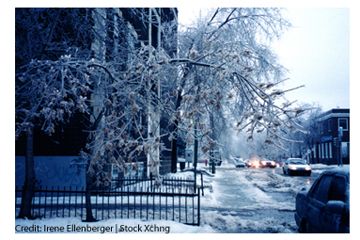4 Ways to Avoid Winter Falls

Winter is here, and that means snowstorms, freezing rain and plenty of ice on sidewalks, steps and driveways. It also means the risk of slipping and falling is very real. So is the likelihood of injury. Think fractures, muscle tears, and strained knees, ankles, legs, you name it.
According to a 2010 study published in the Journal of the American Geriatrics Society, nearly 50 percent of falls among older people happen outside. But young adults also have to watch where they’re going. A recent study published in the journal Injury Prevention reported about one in three pedestrians is distracted by mobile devices while crossing the street. That can set the stage for a nasty slip. Here are four strategies to lower the risk of winter falls.
In addition, check out our sister site Dignifyed for in-depth reviews of medical alert systems, which have fall detection capabilities.
Improve Balance
"People fall because they lose their balance," said Dr. Ronald Grelsamer, an orthopedic surgeon at Mount Sinai School of Medicine in New York City. "Someone with good balance will catch themselves, but someone with poor musculature will fall."
Strong muscles are the key to better balance. That's why Grelsamer recommends strengthening muscles in the butt, abs, hips and legs. Balancing exercises, such as standing on one leg at a time or standing on your toes, will also help. "When you slip and fall muscles tend to tighten, so by working those muscles, you have a better chance of keeping yourself up," he said.
Although working on balance is important, Teresa Shea, a physical therapist at the University of Wisconsin Health Rehabilitation Clinics emphasizes the importance of proper footwear to help maintain footing. "Wear shoes or boots with good traction," Shea said. To minimize the possibility of being jostled and, possibly losing your balance, make smart wardrobe choices. "Wear brightly colored clothes so people can see you and are less likely bump into you," said Shea.
Sign up for the Live Science daily newsletter now
Get the world’s most fascinating discoveries delivered straight to your inbox.
Do the "Shuffle"
If there's no other choice but to walk on that ice or snow, shuffle rather than stride. That means take baby steps."Move your feet apart a little bit, just a few inches, and bend the knees a little as you walk," Greisamer said. "You'll be a lot more stable and have better balance."
Go Sideways on Inclines
When walking up or down an incline that’s coated with ice or snow, turn sideways, then take a step with the foot that is leading, and bring the other foot alongside it. Continue this motion until you reach the top or bottom. "The key is to not cross your feet," Grelsamer said. "When you cross your feet, you’re very unstable."
Focus, Focus
Pay attention to surroundings and watch out for black, or invisible, ice and wet leaves, Greslamer advised. Also exercise caution when exiting cars, buses and trains or when walking up and down outdoor stairs, he added. Often people lower their heads when it's snowing or extremely windy, and that can set the stage for a fall, too. "It puts you at higher risk of not seeing ice," Shea said. The safest option: slow down and stop frequently to check the ground around you, she advised.
Original article on Live Science.










